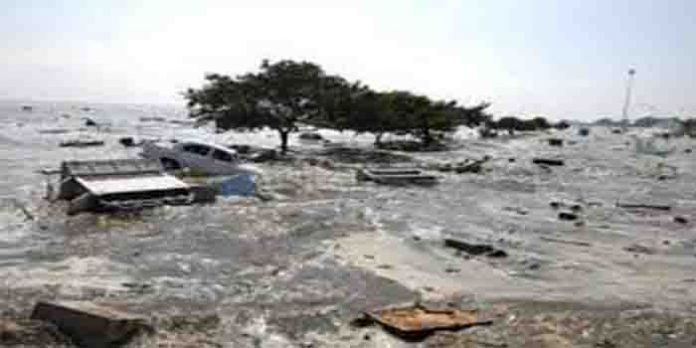A powerful earthquake off the coast of Sumatra, Indonesia, on December 26, 2004 also known as the Christmas or Boxing Day tsunami, sets off a tsunami that wreaks death and devastation across the Indian Ocean coastline. The magnitude 9.1 quake ruptured a 900-mile stretch of fault line where the Indian and Australian tectonic plates meet. The quake was the second strongest ever recorded and the estimated 230,000 dead made this disaster one of the 10 worst of all time.
It was a powerful megathrust quake, occurring where a heavy ocean plate slips under a lighter continental plate. The quake caused the ocean floor to suddenly rise by as much as 40 meters, triggering a massive tsunami. Within 20 minutes of the earthquake, the first of several 100-foot waves hit the shoreline of Banda Aceh, killing more than 100,000 people and pounding the city into rubble. Then, in succession, tsunami waves rolled over coastlines in Thailand, India, and Sri Lanka, killing tens of thousands more. Eight hours later and 5,000 miles from its Asian epicenter, the tsunami claimed its final casualties on the coast of South Africa. In all, nearly 230,000 people were killed, making it one of the deadliest disasters in modern history.
The tsunami devastated thousands of communities in countries bordering the Indian Ocean. Destruction was greatest in the Indonesian provinces of Aceh and North Sumatra, where an estimated 170,000 people perished and the built and natural environment was damaged along hundreds of kilometers of coastline. Since the 2004 tsunami, governments and aid groups have prioritized disaster risk reduction and preparedness. Since then, ocean floor earthquake sensors have been installed to trigger early warnings, and many local communities have been trained in evacuation and disaster response.






















